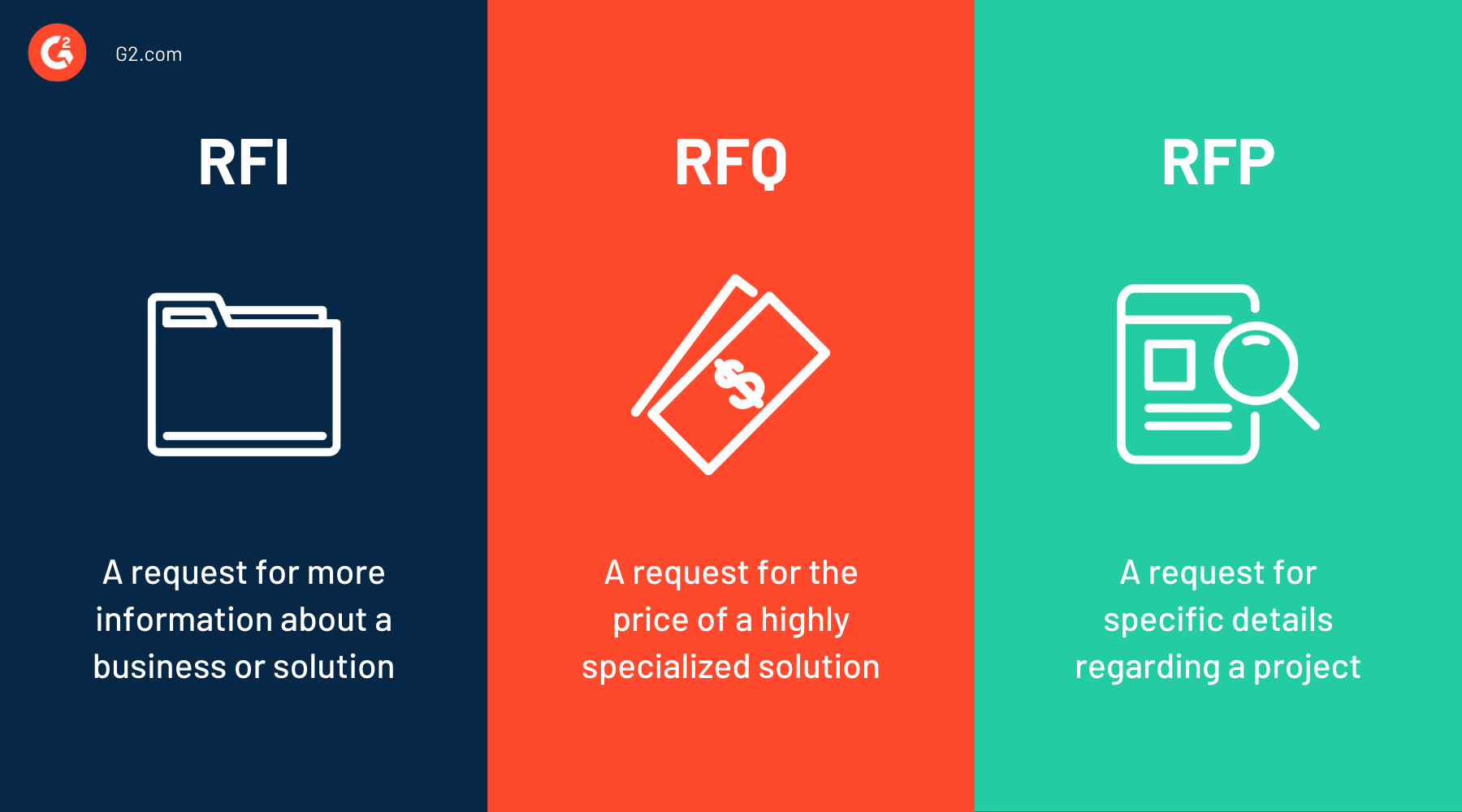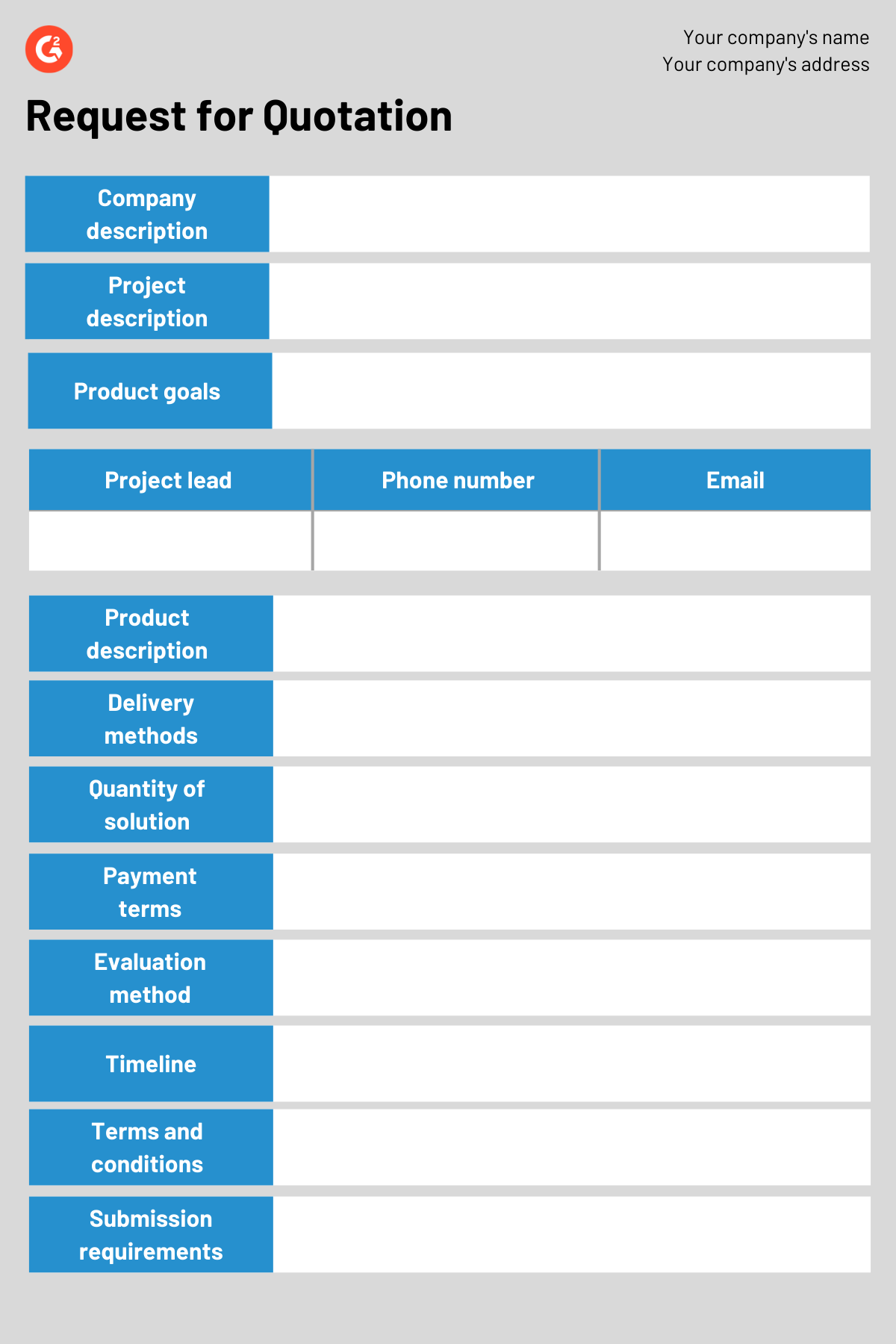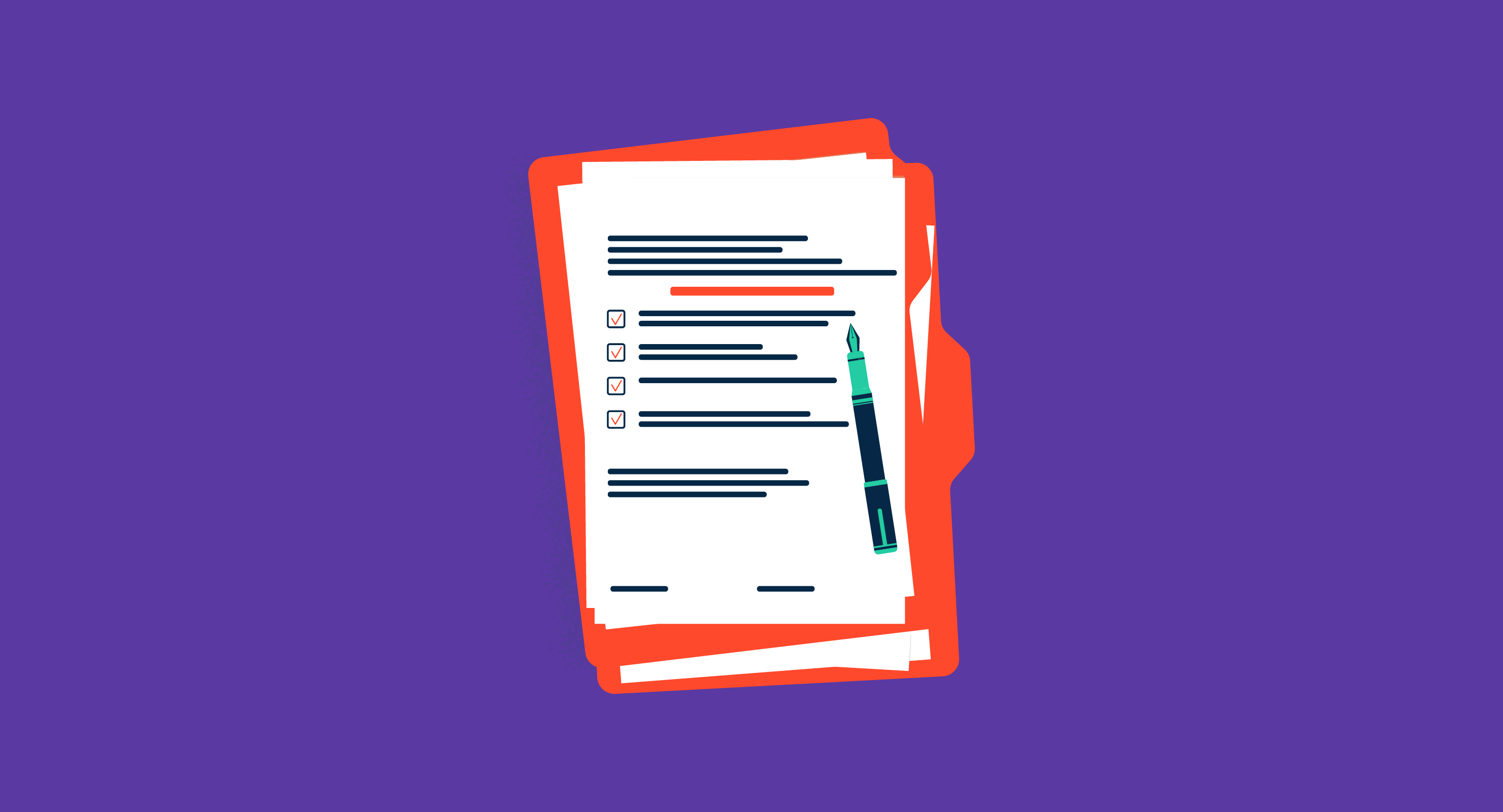If you’ve successfully moved a prospect down your sales funnel to the point where they want to start talking price, that’s a good sign.
This means that all of your prior conversations regarding the benefits that your solution can provide intrigued them enough to consider buying it. In today’s competitive marketplace, products are being configured, priced, and quoted to produce the ideal combination of features for every single customer. And with customized products come customized prices.
Your website might give potential clients an estimate of what your solution might cost, but if they’re serious about buying, they’ll send an RFQ to get a more exact picture.
What is a request for quote (RFQ)?
An RFQ, also known as an invitation for bid (IFB), is something a buyer seeks from a seller to see how much a solution they want to buy will cost. The purpose of this quote is to give the buyer the financial details behind a solution before they make the purchase.
The request for quote process is necessary for businesses that buy and sell highly specialized products. One size fits all is no longer a reality in B2B SaaS sales. As a business entity, you will wear the hat of both the buyer and the seller at one point or another – your business needs to purchase solutions, too.
This means that you will experience sending and receiving RFQs. The most important lesson for both sides of the RFQ and overall procurement process is to be as specific as possible.
On the buying side, making sure the vendor knows exactly what you want is the best way to get an accurate price quote. When it comes to selling, being specific is crucial because once accepted, those price quotes can be used as legally binding documentation for the transaction.
RFI vs. RFQ vs. RFP
RFQs are rarely standing alone in a customer’s buying process. Along with a request for a quote often comes a request for information (RFI) and a request for a proposal (RFP). All three of these items can be used independently or in conjunction with one another.
While they are different request forms, RFIs, RFQs, and RFPs all serve the same overarching purpose: to make sure both parties have all of the relevant information necessary to move forward with the deal. For buyers, it’s the cost and capabilities of the solution. For sellers, it’s the expectations of the buyer.
The best way to explain RFQs is by taking a deeper look at each of these requests to get a better grip on why businesses use them, what they typically include, and the order they follow.
Request for information (RFI)
An RFI is a request for information. It’s the formal method for potential buyers to ask vendors for more information regarding their solution. Between RFIs, RFQs, and RFPs, RFIs are sent the earliest, as they act as a source of important preliminary information for customers.
RFIs will pose open-ended questions to vendors to get a good idea of what benefits, features, and capabilities their solution can offer. The nice thing about sending an RFI is that all of the details you’re looking for are going to be ingrained in the sales rep’s brain, meaning you’ll get your answers quicker than other types of requests.
The solicitation of an RFI doesn’t promise that a purchase will be made, but simply exhibits the buyer’s interest in what they already know and a curiosity to learn more. Vendors will only post so much on their website, so buyers who are becoming increasingly interested in the solution will use an RFI as a part of their decision making process.
While receiving an RFI from a customer is a good sign they’re at least a little bit interested in your product, it’s likely they’re collecting them from multiple vendors. But you can’t blame them. To make an informed buying decision, they need to examine all of their options.
As a buyer, your RFI should ultimately give you a good idea of the vendor's level of expertise. Give them some background information about your company and let them know what you’re trying to accomplish with their product.
As a seller, craft your response based on all the information within the RFI, along with some other research you did on the prospect. Their request should give you a good idea of their pain point, so make sure to speak to that in your response.
Now is the time to get SaaS-y news and entertainment with our 5-minute newsletter, G2 Tea, featuring inspiring leaders, hot takes, and bold predictions. Subscribe below!
Request for quote (RFQ)
After sourcing an RFI and receiving a response, the customer will consider the information and determine if the vendor can provide a valuable solution that their business needs. If this is the case, the next area of concern is the price. Customers will obtain this information by sending a request for a quote, or an RFQ.
An RFQ is a request for a quote regarding a highly-specific solution that a buyer will send to a potential vendor. These requests will include a list of requirements that the customer is looking for in a product.
At this stage in the buying process, the customer knows exactly what they want and where they can get it. The purpose of an RFQ is to make sure the solution can be bought within their budget.
Potential customers will also be sending multiple RFQs to numerous vendors. However, if you receive one, it shows that the buyer’s interest level has increased since they got your response to their RFI.
As a buyer, make sure your RFQ includes a detailed list of any and all features, capabilities, and functionalities you’re seeking. Give the vendor an idea of the expected duration of your use of their solution, the date you would like to start using it, and any payment terms relevant to your business. All of these details are incredibly important in receiving as detailed a response as possible.
As a seller, when you respond with a price quote, make sure all of the pricing details are exactly the way you want them to be. If a customer signs the price quote you respond with, it could become a legally binding document in the sales process. So make sure whatever you respond with, you’re comfortable sticking to.
Tip:When you’re wearing your selling hat, make sure to use CPQ software to generate quotes as accurately and efficiently as possible.
Request for proposal (RFP)
A request for a proposal is a method customers will use to get specific information from vendors, including the price of a solution. Prospects seeking a new product will send RFPs to offer more detail regarding the problem they’re facing in the hopes that the vendor will respond with some suggested resolutions.
A key purpose of sending an RFP is to gain insight regarding solutions specific to your problem that maybe you didn’t think of during your research. People within the company have more experience with their product, and should be used as a resource to configure the best solution and action plan possible.
When sending an RFP, you need to be as specific as possible. Give the vendor details regarding your processes, needs, and end goals for the investment. At this point, you should be ready to make a purchase. This isn’t so much of an exploration phase, but more of a “let’s build a concrete action plan for my business” phase.
Tip: G2’s Team Buying Tool makes it easier to identify certain vendors that are the best fit for your job. Collaborate with your buying team to gather requirements, prioritize needs, create a vendor shortlist, and evaluate the vendor products – all in one place, all for free!
RFPs will also include questions regarding the workflow of the collaboration, should a purchase be made. For example, the buyer will ask about implementation processes, methods for keeping cost under control, and any foreseeable concerns the vendor might have regarding the timeline.
Customers might ask for case studies, references, or customer reviews. If that’s the case, claim your profile on G2 and let your old customers do the talking for you.
Here's a quick recap:

Want to learn more about RFP Software? Explore RFP products.
The RFQ process
Your business will send and receive plenty of RFQs during its lifetime, and the end result of the document will almost never be the same. However, the business process will typically follow the same six steps.
Let’s go about explaining it from the buyer’s perspective, since they undergo every phase in the process. As for sellers, there’s still plenty to learn from this side of things.
1. Preparing the document
During the awareness phase of the buyer journey, the customer will start to identify and define the pain point their business is experiencing and seeking to resolve. That stage of inward exploration can actually be extremely helpful as you start to construct an RFQ, as you can easily highlight the needs you want fulfilled.
When preparing an RFQ, start with a quick introduction to your business and the problem that you’re hoping the supplier can resolve. This will get the ball rolling for the seller, helping them start to think about what your business needs.
Besides your background information, here’s a list of things you must include in your RFQ:
- Product or service you’re interested in
- Delivery methods
- Quantity of the solution
- Payment terms
- Evaluation method
- Timeline for reviewing and decision making
- Contract terms and conditions
- Requirements for submitting the price quote
It might look a little something like this template:

Want to download this template? Click here.
2. Define the supplier list
Next, the buyer will come up with a list of potential service providers. The market is always evolving, and new businesses are entering with never-before-seen innovations. Your request for quotation should be open to more than one bidder. It’s possible that someone is offering a specially configured solution that you’re unaware of.
While your RFQ shows interest in someone’s business, it isn’t a binding contract. That’s the beauty of it – you can get an in-depth description of more than one potential solution and consider all of your options before making a purchase.
3. Send the RFQ
Send an RFQ to each potential supplier on your list. Before doing that, however, make sure that you’ve included every necessary detail regarding your business. To find the best solution for your company, the seller must understand the ins and outs, process, strategies, and perhaps most importantly, goals.
Also keep in mind timelines and dates you mentioned for submission. Before sending you an actual price quote, the vendor might contact you with some clarifying questions, so keep that in mind.
4. Analyze the responses
Then it’s time to analyze the responses you received. Keep your due date in mind at this stage. If you set a deadline for bids, wait until you’ve reached that date and then take a look at all of them afterwards.
Pay attention to important product features, price, duration, and any other details that could help or hinder your relationship with the vendor or resolution of the pain point.
5. Make a decision
The most obvious way to make your decision is by selecting the vendor that is offering the most valuable solution at the lowest price. While that’s a solid strategy for choosing to buy from someone, there are other things to consider as well.
How were your conversations with the sales rep before sending the RFQ? Did they truly have your best interest in mind? Are they reliable? Are they someone looking to be in a mutually beneficial and respectful business relationship? The answers to these questions should also factor into your decision making.
After you’ve chosen a vendor, let them know the good news.
6. Alert the others
Other sellers will be expecting a response to their price quote, and it’s rude to leave them hanging. Don’t forget to notify the other businesses that received your RFQ that you’ve decided to move forward with another company. It’s common courtesy, and you don’t want to burn any bridges.
Abide by the process
The buying process is called a process for a reason. Your actions, language, and requests as a buyer give off important signals that inform sellers of your readiness to buy.
Sending an RFQ and getting a price quote might be one of the last things you do before you make a sell or decide on a purchase. Be clear, concise, and don’t be afraid to tell them exactly what you want.
Once you’ve made your buying or selling decision, make sure to keep the deal up to date in your business’ contract management software.

Mary Clare Novak
Mary Clare Novak is a former Content Marketing Specialist at G2 based in Burlington, Vermont, where she is explored topics related to sales and customer relationship management. In her free time, you can find her doing a crossword puzzle, listening to cover bands, or eating fish tacos. (she/her/hers)

